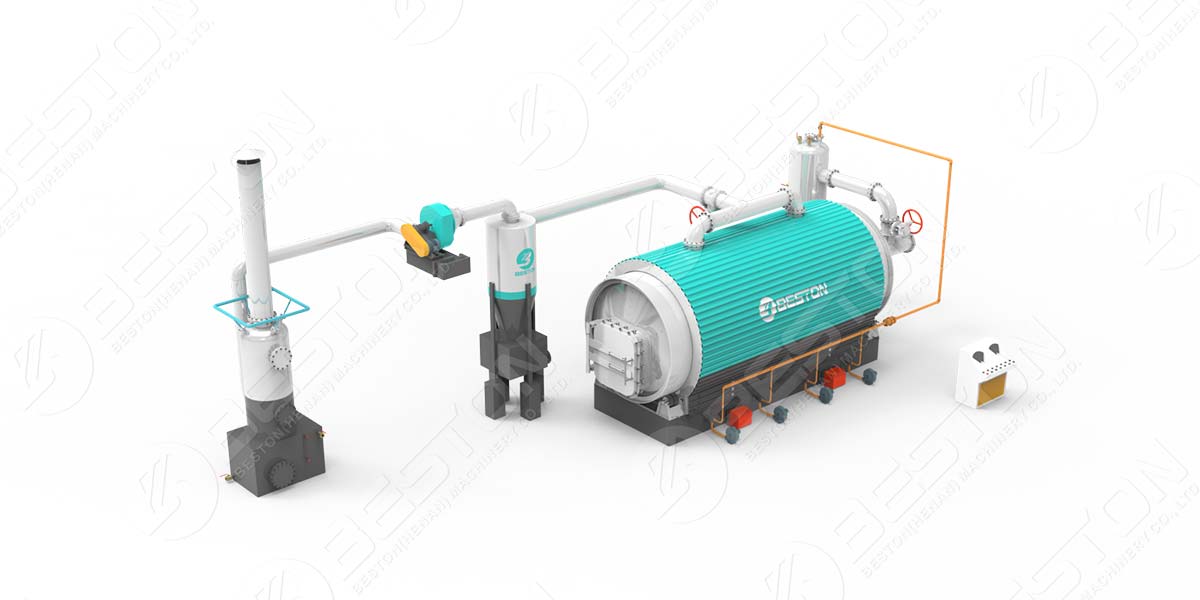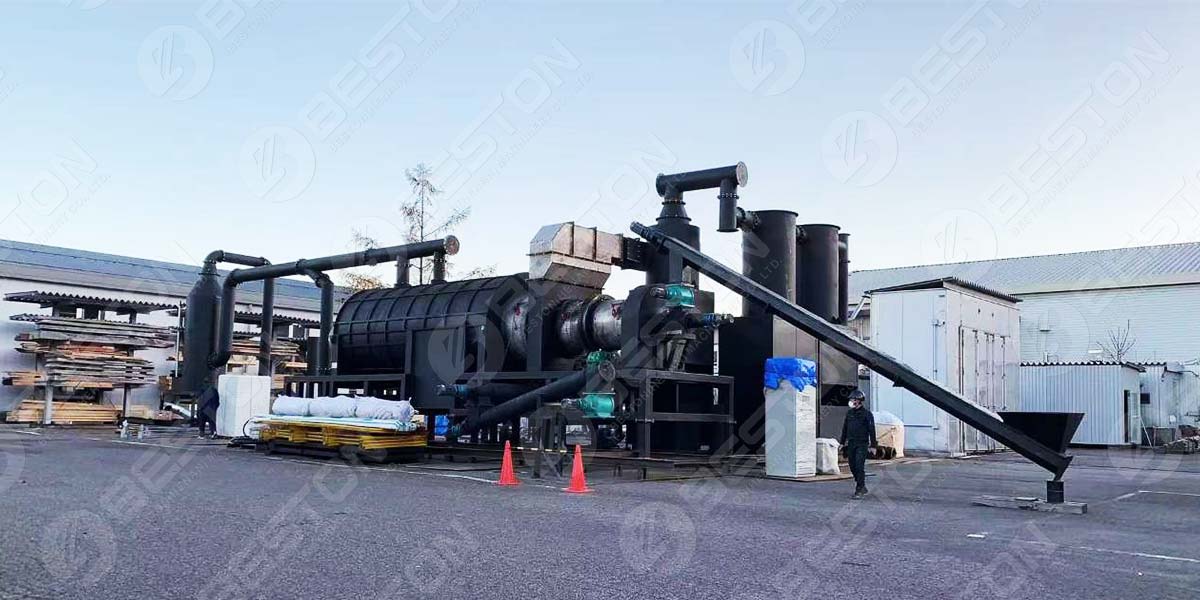A mobile biomass pyrolysis plant can operate independently of an electrical grid and can re-locate multiple times a year. The economics of biomass pyrolysis are favorable for a variety of reasons. The cost of raw materials is lower, and the biomass haul distance is much shorter than that of a fixed-site biomass pyrolysis plant. The mobile biomass pyrolysis plant can be operated on a variety of biomass sources and is portable, allowing for multiple re-locations per year.

Integrated Fast Pyrolysis
The pyrolysis unit is installed on a trailer of a flat-bed 18-wheeler, making it portable and allowing access to waste products from rural areas. It also enables access to woody biomass that is often left in agricultural areas, far from industrial facilities. This could be a major cost-savings over competing processes, which require the transportation of biomass. The capital cost of an integrated fast pyrolysis plant for biomass is minimal, and the entire unit is portable.
The test was conducted on a range of semi-natural feedstocks. Two biomass samples were processed and compared; the plants studied were rush and bracken. The plants were identified by thermogravimetric analysis to be suitable for fast pyrolysis. The biomass samples were chosen to be representative of LIHD biomass, since they were obtained from areas dominated by a particular plant species. The samples were also representative of whole-sward harvests by a contract environmental contractor. More information on charcoal making machine here.
Biochar Pyrolysis Plant
The heart of a Biochar pyrolysis plant is the reactor, where heat is applied to dry feedstock. In an environment without oxygen, the feedstock splits into two separate organic compounds without combustion. The energy released by the split compounds creates new reaction products. The charring dust and the liquid pyrolysis products are separated by condensation. The biochar produced is a valuable by-product. It can be used to create a wide range of biomaterials, ranging from fuels to reusable paper and wood.
Using the LCA method, we estimated the net revenue of a biochar pyrolysis plant. Our LCA model included regional differences in the cost-revenue contributions of current pyrolysis plants. We also identified locations where biochar-based fuels could generate the highest net revenue. This analysis is crucial for deciding whether the technology is financially viable. Using the LCA method, we can model the potential net revenue of biochar-based bioenergy plants and design a plan to build them.
Fast Pyrolysis
Bio-oil is a dark brown liquid whose elemental composition closely approximates that of biomass. The color of bio-oil varies according to the initial feedstock, the mode of fast pyrolysis used, and the presence of micro-carbons. Bio-oil with high nitrogen content is greenish in color. However, its exact composition is difficult to predict. In this article, we examine some aspects of bio-oil production. Get charcoal making machine price here.
During the nineties, BTG Biomass Technology Group began to develop the concept of fast pyrolysis. This innovative method utilised no inert gases and allowed for rapid mixing of biomass and hot bed material. BTG further optimized the concept, and the modified rotating cone technology led to several patents. The company finalized a pilot plant on a laboratory scale in 1998 and went on to develop a smaller version of the process in 2004. This smaller version of the process has enabled the company to test more challenging feedstocks.

Bio-oil Production
A bio-oil pyrolysis plant can be an attractive alternative fuel for renewable energy producers. The process involves converting biomass feedstocks into renewable crude oil. This oil can then be used as fuel oil blendstocks or refined to produce gasoline and diesel. In 2010, KiOR began construction of its Columbus biorefinery, but in 2014, announced that it would idle the plant due to financial challenges. The company eventually filed for Chapter 11 bankruptcy and closed its doors. The Columbus biorefinery was not included in its bankruptcy filing.
While many research articles have been published on improving the process for bio-oil production from biomass, few have examined the economics of such a process. While fast pyrolysis has been used successfully in some experiments, there is no economic analysis of the process. However, commercial viability of bio-oil production relies on reducing the manufacturing costs while improving product quality and increasing access to abundant biomass. By conducting economic analyses, the feasibility of bio-oil production in large-scale industrial applications can be assessed. See the related information on the biochar machine here.